- Benefits of Growing Super Elite Potatoes
- 1. High Nutritional Value
- 2. Improved Taste and Texture
- 3. Disease Resistance
- 4. Higher Yield
- 5. Reduces Environmental Impact
- 6. Potential for Income Generation
- 7. Genetic Preservation
- Understanding the Importance of Proper Preparation
- Soil Preparation
- Seed Selection
- Seed Treatment
- Spacing and Depth
- Watering and Fertilization
- Weed and Pest Control
- Soil Preparation for Super Elite Potatoes
- Testing Soil pH
- Improving Soil Drainage
- Adding Nutrients
- Loosening the Soil
- Removing Weeds and Rocks
- Applying Mulch
- Conclusion
- Selection and Storage of Potato Seeds
- Storage:
- Methods for Germinating Potato Seeds
- 1. Chitting
- 2. Water Soaking
- 3. Pre-Sprouting in Soil
- 4. Hydroponic Germination
- Techniques for Planting Potato Seeds
- 1. Seed Selection
- 2. Preparing the Soil
- 3. Seed Treatment
- 4. Planting Depth and Spacing
- 5. Hilling
- 6. Watering and Mulching
- 7. Fertilization
- Caring for Super Elite Potato Plants
- 1. Watering
- 2. Fertilization
- 3. Mulching
- 4. Hilling
- 5. Pest and Disease Control
- 6. Harvesting
- Harvesting and Storing Super Elite Potatoes
- 1. Timing of Harvest
- 2. Loosening the Soil
- 3. Digging
- 4. Drying and Curing
- 5. Sorting and Cleaning
- 6. Storage
- 7. Longer-Term Storage
- “Question-Answer”
- Can I grow potatoes from seeds instead of using potato tubers?
- What is the proper way to prepare potato seeds for planting?
- When is the best time to sow potato seeds?
- Can I sow potato seeds directly into the ground?
- How deep should I plant potato seeds?
- How long does it take for potato seeds to germinate?
- “Video” Lazy Potatoes | The Easy Way to Grow Potatoes | No Dig, No Compost, Easy Harvest!
Growing potatoes from seeds can be a rewarding and satisfying experience for any gardener. Whether you are an experienced gardener or a beginner, proper preparation and sowing techniques are essential for cultivating super elite potatoes. By following a few simple steps, you can ensure that your potatoes thrive and produce a bountiful harvest.
First and foremost, it is crucial to choose the right potato seeds. Look for certified seed potatoes, as they are disease-free and have a higher chance of producing healthy plants. Once you have selected your seeds, it is time to prepare the soil. Potatoes prefer well-draining soil that is rich in organic matter. Dig a trench or create raised beds and amend the soil with compost or well-rotted manure to improve its fertility and drainage.
After preparing the soil, it is important to chit or pre-sprout the potato seeds. This process involves placing the seeds in a cool, well-lit area for several weeks to encourage sprouting. This step is optional but can help accelerate growth and increase yield. Once the seeds have sprouted, it is time to plant them in the prepared soil. Dig holes or furrows that are spaced about 12 inches apart, and place the sprouted seeds in the holes with the sprouts facing upwards.
Finally, cover the seeds with soil and water thoroughly. Potatoes require consistent moisture to grow properly, so make sure to water them regularly. It is also important to protect the plants from pests and diseases. Consider adding mulch around the base of the plants to suppress weeds and retain moisture. Be vigilant for signs of pests, such as potato beetles, and take appropriate measures to control them.
With proper preparation and sowing techniques, you can grow super elite potatoes that are not only delicious but also visually appealing. Harvest your potatoes when the plants have died down and the skins are set. Carefully dig them up, being cautious not to damage the tubers. Store them in a cool, dark place to prevent sprouting. And there you have it – your very own supply of super elite potatoes, ready to be enjoyed in a variety of dishes!
Benefits of Growing Super Elite Potatoes
Growing super elite potatoes can offer a range of benefits for individuals and communities. Here are some of the key advantages:
1. High Nutritional Value
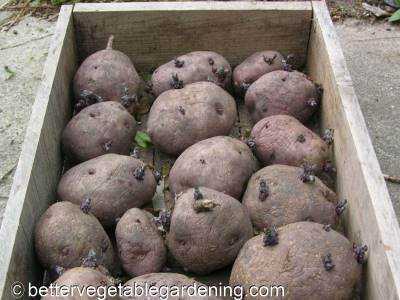
Super elite potatoes are known for their high nutritional value, making them an excellent addition to a balanced diet. They are rich in vitamins, minerals, and dietary fiber, providing essential nutrients for the body.
2. Improved Taste and Texture
Compared to regular potatoes, super elite potatoes often have a superior taste and texture. They are more flavorful and have a smoother, creamier texture, enhancing the overall culinary experience.
3. Disease Resistance
Super elite potatoes are bred to be resistant to common potato diseases, such as late blight and blackleg. This reduces the need for pesticides and lowers the risk of crop failure, ensuring a higher yield.
4. Higher Yield
Due to their improved genetics and disease resistance, super elite potatoes tend to have a higher yield compared to traditional varieties. This can be beneficial for farmers and individuals looking to grow their own food, providing a greater quantity of potatoes per harvest.
5. Reduces Environmental Impact
By growing super elite potatoes, it is possible to minimize the environmental impact of potato cultivation. The built-in disease resistance reduces the need for chemical pesticides, promoting a more sustainable and eco-friendly approach to agriculture.
6. Potential for Income Generation
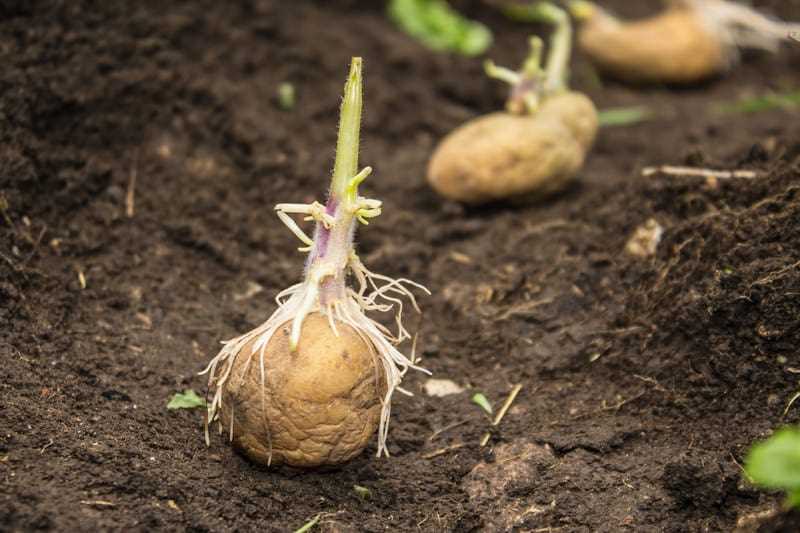
For farmers or individuals looking to generate income, growing super elite potatoes can be a profitable venture. The higher yield and premium quality of these potatoes can attract a higher market price, creating an opportunity for financial gain.
7. Genetic Preservation
Super elite potato varieties often involve the preservation and propagation of unique genetic traits. By growing these potatoes, individuals contribute to the conservation and maintenance of valuable genetic diversity within the potato plant population.
In conclusion, growing super elite potatoes offers numerous benefits, including high nutritional value, improved taste and texture, disease resistance, higher yield, reduced environmental impact, income generation potential, and genetic preservation. These advantages make super elite potatoes a desirable choice for individuals and communities interested in sustainable and nutritious potato cultivation.
Understanding the Importance of Proper Preparation
Proper preparation is crucial when it comes to growing super elite potatoes from seeds. It sets the foundation for a successful growth cycle and ensures that your plants have everything they need to thrive.
Soil Preparation
The first step in proper preparation is soil preparation. The soil should be well-drained, loose, and nutrient-rich. Before sowing the seeds, it’s essential to test the pH levels of the soil and make any necessary adjustments. Potatoes prefer slightly acidic soil with a pH range of 5.8 to 6.5.
Additionally, the soil should be free from weeds and large rocks or debris. It’s beneficial to add organic matter such as compost or well-rotted manure to the soil to improve its fertility and structure.
Seed Selection
Choosing the right seeds is another critical aspect of proper preparation. Look for high-quality potato seeds from reliable sources. Select varieties that are known for their excellent yield and disease resistance. It’s also important to consider the specific growing conditions and climate in your region when choosing varieties.
Seed Treatment
Before sowing the seeds, it’s recommended to treat them to prevent diseases and promote healthy growth. One common method is to soak the seeds in a solution containing a fungicide and bacterial control agent overnight. This step helps protect the seeds from various soil-borne pathogens.
Spacing and Depth
Proper spacing and seed depth are essential for maximizing the growth potential of your potato plants. Each seed should be planted at a depth of around 3-5 inches. Leave about 12-15 inches of space between each seed to allow for root development and prevent overcrowding.
Watering and Fertilization
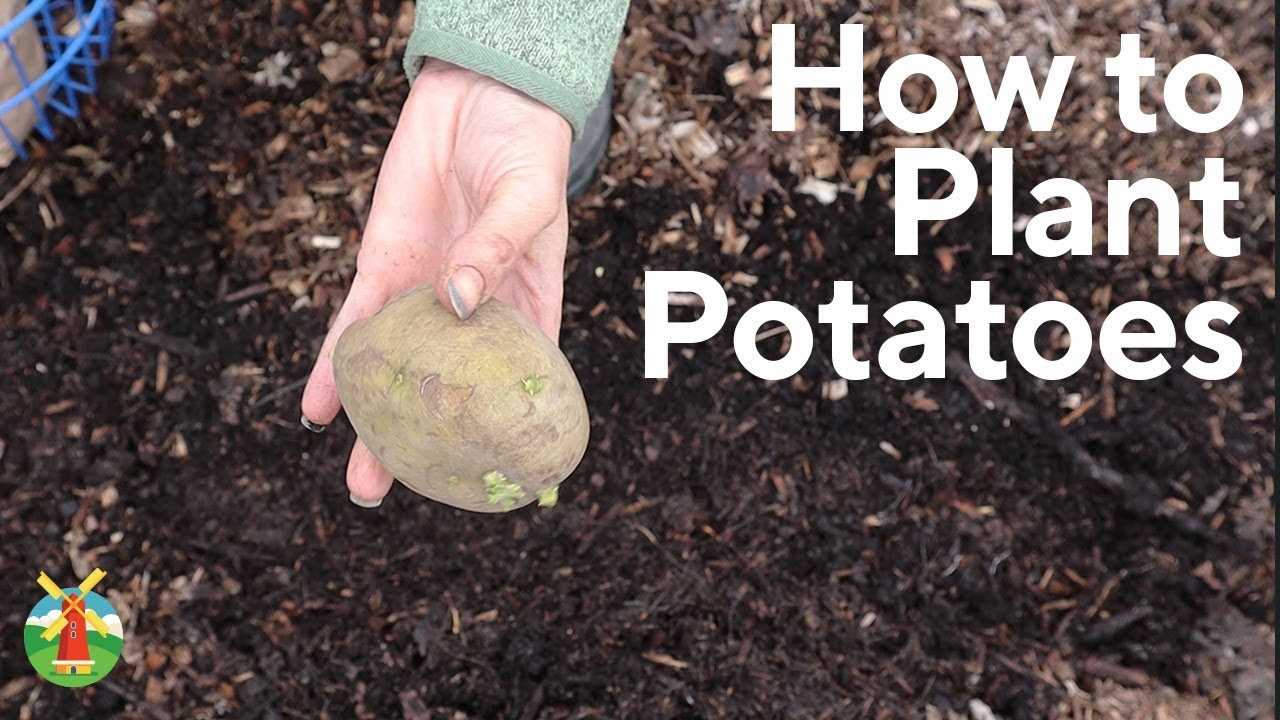
Once the seeds are sown, it’s crucial to provide them with adequate water and nutrients. Keep the soil consistently moist but avoid overwatering, as this may cause rotting. Regularly monitor the moisture levels and adjust your watering schedule accordingly.
In terms of fertilization, it’s beneficial to incorporate a balanced organic fertilizer into the soil before planting the seeds. This will provide the necessary nutrients for healthy plant growth throughout the season.
Weed and Pest Control
Lastly, proper preparation includes implementing weed and pest control measures. Regularly inspect your potato plants for any signs of weeds, insects, or diseases. Remove any weeds promptly and apply organic pest control methods if necessary. This will help prevent competition for nutrients and protect your plants from potential damage.
By understanding the importance of proper preparation and following these steps, you can create the ideal environment for your super elite potato seeds to grow and flourish.
Soil Preparation for Super Elite Potatoes
Testing Soil pH
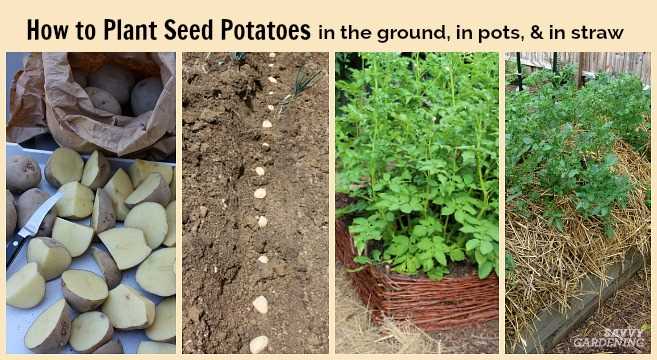
Before planting your super elite potatoes, it is important to test the pH level of your soil. Potatoes prefer a slightly acidic soil with a pH level between 5.0 and 6.0. This can easily be tested using a soil testing kit, which can be purchased at most gardening stores.
Improving Soil Drainage
Super elite potatoes require well-drained soil to prevent waterlogging and rotting of the tubers. If your soil is heavy and tends to retain water, you can improve drainage by adding organic matter such as compost or well-rotted manure. This will help to break up the soil structure and allow excess water to drain away more efficiently.
Adding Nutrients
Potatoes are heavy feeders and require a nutrient-rich soil to produce healthy and productive plants. Before planting, it is recommended to enrich the soil with organic matter such as compost or aged manure. This will provide a slow release of nutrients throughout the growing season.
Loosening the Soil
Potatoes prefer loose and friable soil to facilitate root penetration and tuber development. Prior to planting, it is important to loosen the soil by tilling or digging it to a depth of at least 6-8 inches. This will create a loose and aerated environment that promotes healthy root growth.
Removing Weeds and Rocks
Before sowing your super elite potato seeds, it is essential to remove any weeds or rocks from the planting area. Weeds compete with the potatoes for nutrients and water, while rocks can hinder the development of the tubers. Remove any unwanted vegetation and stones to ensure optimal growing conditions for your potatoes.
Applying Mulch
After planting your super elite potato seeds, you can apply a layer of mulch around the plants. Mulch helps to retain moisture in the soil and also suppresses weed growth. Organic mulch such as straw or wood chips is ideal for potatoes.
Conclusion
Proper soil preparation is crucial for growing super elite potatoes. Testing the pH, improving drainage, adding nutrients, loosening the soil, removing weeds and rocks, and applying mulch are essential steps to create an optimal environment for your potato plants. By following these soil preparation techniques, you can increase the chances of achieving a successful and abundant potato harvest.
Selection and Storage of Potato Seeds
Proper selection and storage of potato seeds are essential for successful potato cultivation. Here are some important factors to consider:
- Variety: Choose a potato variety that is suitable for your climate and growing conditions. Consider factors such as disease resistance, yield potential, and culinary preferences.
- Quality: Select high-quality potato seeds that are disease-free, firm, and free from any physical damage or sprouting.
- Certified Seeds: It is recommended to use certified potato seeds, as they have been tested and proven to be free from diseases and other abnormalities.
- Size: Choose seeds of uniform size for consistent sprouting and growth.
Storage:
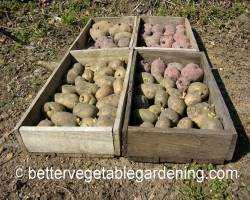
Proper storage of potato seeds is crucial to maintain their viability. Follow these guidelines for storing your potato seeds:
- Cool Temperature: Store potato seeds in a cool, dark place with a temperature between 40-50°F (4-10°C).
- Adequate Ventilation: Ensure that the storage area has proper ventilation to prevent moisture buildup and rotting.
- Dry Environment: Keep the potato seeds in a dry environment to prevent mold or fungal growth.
- Avoid Exposure to Light: Potatoes exposed to light can turn green and produce toxic compounds, so it is essential to store them in a dark place.
- Regular Inspection: Check the stored potato seeds periodically for signs of disease or decay. Remove any damaged or sprouted potatoes to prevent spread.
By carefully selecting and storing your potato seeds, you can ensure a healthy and productive potato crop.
Methods for Germinating Potato Seeds
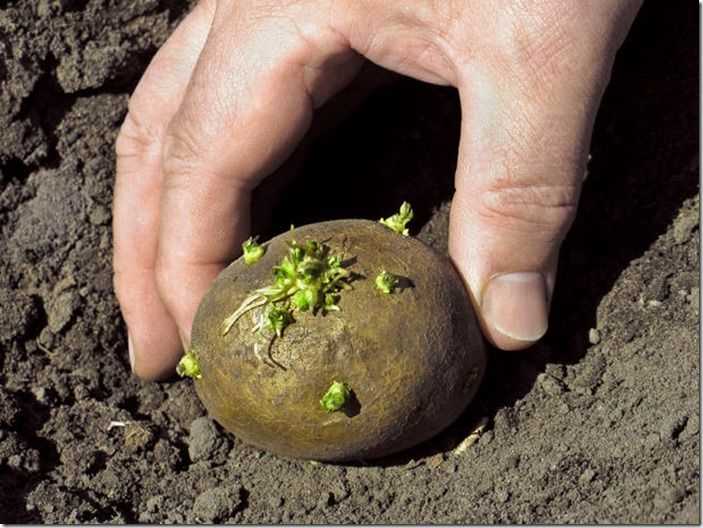
Germinating potato seeds is an important step in the potato growing process. Proper germination techniques ensure healthy and vigorous potato plants that will yield a bountiful harvest. Here are some methods for germinating potato seeds:
1. Chitting
Chitting is a common method used for germinating potato seeds. It involves placing the seeds in a tray or egg carton with the eyes facing up. The tray or carton should be kept in a cool, well-lit area for a few weeks before planting. This method encourages the seeds to sprout and develop strong sprouts before planting in the soil.
2. Water Soaking
Another method for germinating potato seeds is water soaking. In this method, the seeds are soaked in water for a period of 1-2 days. After soaking, the seeds are drained and placed on a moist paper towel or cloth. The towel or cloth should be kept moist throughout the germination process. This method allows the seeds to absorb water and initiate germination.
3. Pre-Sprouting in Soil
Pre-sprouting potato seeds in soil is another effective method. In this method, the seeds are planted in small planters or pots filled with moist soil. The planters should be placed in a warm and well-lit area, and the soil should be kept moist. This method allows the seeds to sprout and develop roots before transplanting them into the garden.
4. Hydroponic Germination
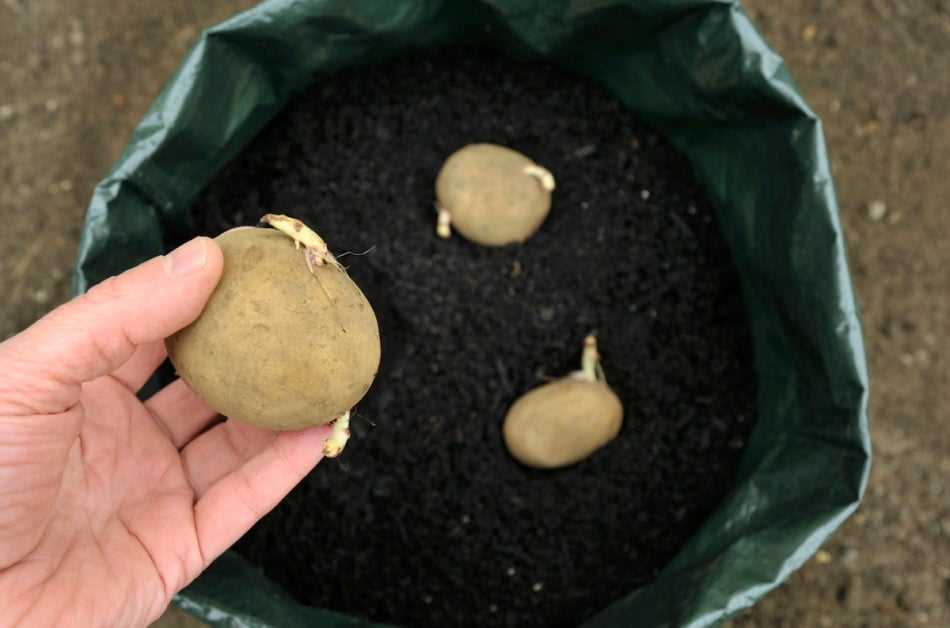
Hydroponic germination is a modern method for germinating potato seeds. It involves using a hydroponic system, such as a nutrient film technique (NFT) or deep water culture (DWC), to provide the seeds with the necessary water and nutrients for germination. This method allows for precise control of the growing conditions and ensures optimal germination.
Regardless of the germination method used, it is important to provide the potato seeds with the right conditions for sprouting, such as adequate moisture, warmth, and light. By following these methods, you can increase the success rate of germinating potato seeds and achieve healthy and robust potato plants.
Techniques for Planting Potato Seeds
Planting potato seeds is a crucial step in growing super elite potatoes. Proper techniques for planting will ensure a successful yield and healthy plants. Here are some important techniques to follow when planting potato seeds:
1. Seed Selection
Choose high-quality potato seeds that are certified and disease-free. Look for seeds that are firm, free from blemishes, and have well-formed eyes. Good seed selection is essential for healthy plant growth.
2. Preparing the Soil
Prepare the soil before planting by removing any weeds, rocks, or debris. Loosen the soil to a depth of about 8 inches (20 cm) to ensure proper root development. Add organic matter, such as compost or well-rotted manure, to improve soil fertility and drainage.
3. Seed Treatment
Prior to planting, it is recommended to treat potato seeds with a fungicide to protect against soilborne diseases. This will help prevent the development of common potato diseases such as late blight or scab.
4. Planting Depth and Spacing
Plant potato seeds about 4 to 6 inches (10 to 15 cm) deep in the soil. Space the seeds approximately 12 to 15 inches (30 to 38 cm) apart within rows, and leave around 3 feet (90 cm) between rows. This spacing will ensure enough room for the tubers to grow in the soil.
5. Hilling
To promote healthy tuber formation, it is important to hill the potato plants as they grow. After the plants emerge, mound soil around the base of the plants, leaving only a few inches of the plant exposed. This technique helps to protect the developing tubers from sunlight, preventing greening and bitterness.
6. Watering and Mulching
Ensure that the potato plants receive adequate water, as they require consistent moisture throughout the growing season. Mulching with straw or other organic materials will help to retain soil moisture and suppress weed growth.
7. Fertilization
Apply a balanced fertilizer or organic compost to promote healthy plant growth. Avoid excess nitrogen, as it can result in excessive foliage growth at the expense of tuber development.
Following these techniques for planting potato seeds will greatly increase the chances of a successful harvest and high-quality potatoes. Remember to monitor the plants for any signs of diseases or pests and take appropriate action if necessary.
Caring for Super Elite Potato Plants
Once your super elite potato plants begin to grow, it is important to provide them with the proper care to ensure healthy growth and a bountiful harvest. Here are some essential tips for caring for your potato plants:
1. Watering
Potatoes require consistent moisture throughout their growth cycle. Provide them with an inch of water per week, either through rainfall or irrigation. Be careful not to overwater, as this can lead to rotting.
2. Fertilization
Super elite potato plants benefit from regular fertilization. Apply a balanced fertilizer, high in potassium and phosphorus, every two to three weeks, starting a few weeks after planting. This will support healthy plant growth and promote the development of large, high-quality potatoes.
3. Mulching
Mulching around your potato plants helps to conserve soil moisture, regulate soil temperature, and suppress weed growth. Apply a layer of organic mulch, such as straw or shredded leaves, around the plants, taking care to keep it away from the main stem.
4. Hilling
One important practice in potato care is hilling. As the plants grow, mound soil around the base of the stems to protect the developing tubers from sunlight. This also helps to prevent greening and increases the yield.
5. Pest and Disease Control
Regularly inspect your potato plants for signs of pests or diseases. Common potato pests include aphids, potato beetles, and nematodes. Implement appropriate pest control measures, such as insecticidal soaps or organic pesticides, if necessary. Additionally, practicing crop rotation and maintaining proper plant spacing can help prevent the spread of diseases.
6. Harvesting
Knowing the right time to harvest your super elite potatoes is crucial. Typically, potatoes are ready for harvest when the plants have flowered and the foliage begins to turn yellow and die back. Gently dig around the base of the plants to harvest the tubers, being careful not to damage them. Brush off excess soil and allow the potatoes to dry for a few hours before storing them.
By following these care practices, you can ensure that your super elite potato plants thrive and produce a plentiful harvest of delicious and nutritious potatoes.
Harvesting and Storing Super Elite Potatoes
Once your super elite potatoes have matured and are ready to be harvested, it is important to follow proper techniques to ensure the best quality and flavor. Here are some steps to help you harvest and store your potatoes:
1. Timing of Harvest
Potatoes are usually ready to be harvested when the plants start to yellow and die back. This is a sign that the tubers have reached maturity. However, it is important to avoid harvesting potatoes too early as they may not have developed their full flavor and size.
2. Loosening the Soil
Before harvesting, gently loosen the soil around the potato plants using a shovel or a fork. Be careful not to damage the tubers while doing this. This step will make it easier to remove the potatoes without any damage.
3. Digging
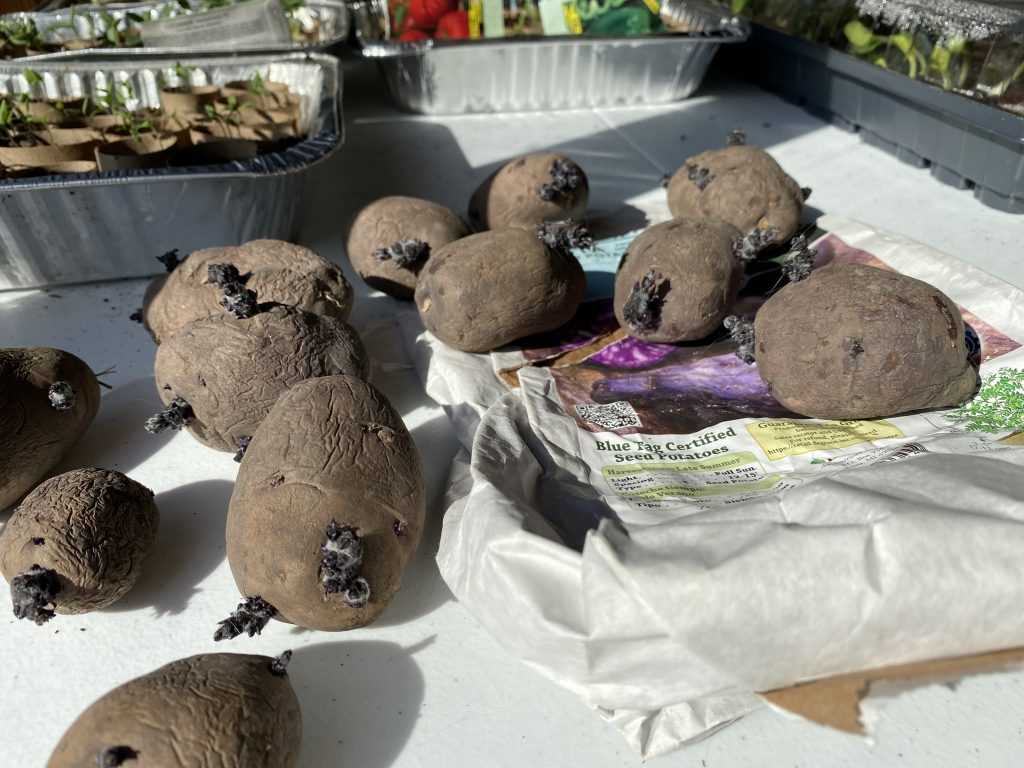
Use a spade or a fork to carefully dig around the base of the plants and lift them out of the ground. Take care to not stab or cut any potatoes during this process.
4. Drying and Curing
After harvesting, allow the potatoes to dry and cure for about two weeks. This will help toughen their skins and allow them to develop a better flavor. Spread them out in a cool, dry and well-ventilated area during this period.
5. Sorting and Cleaning
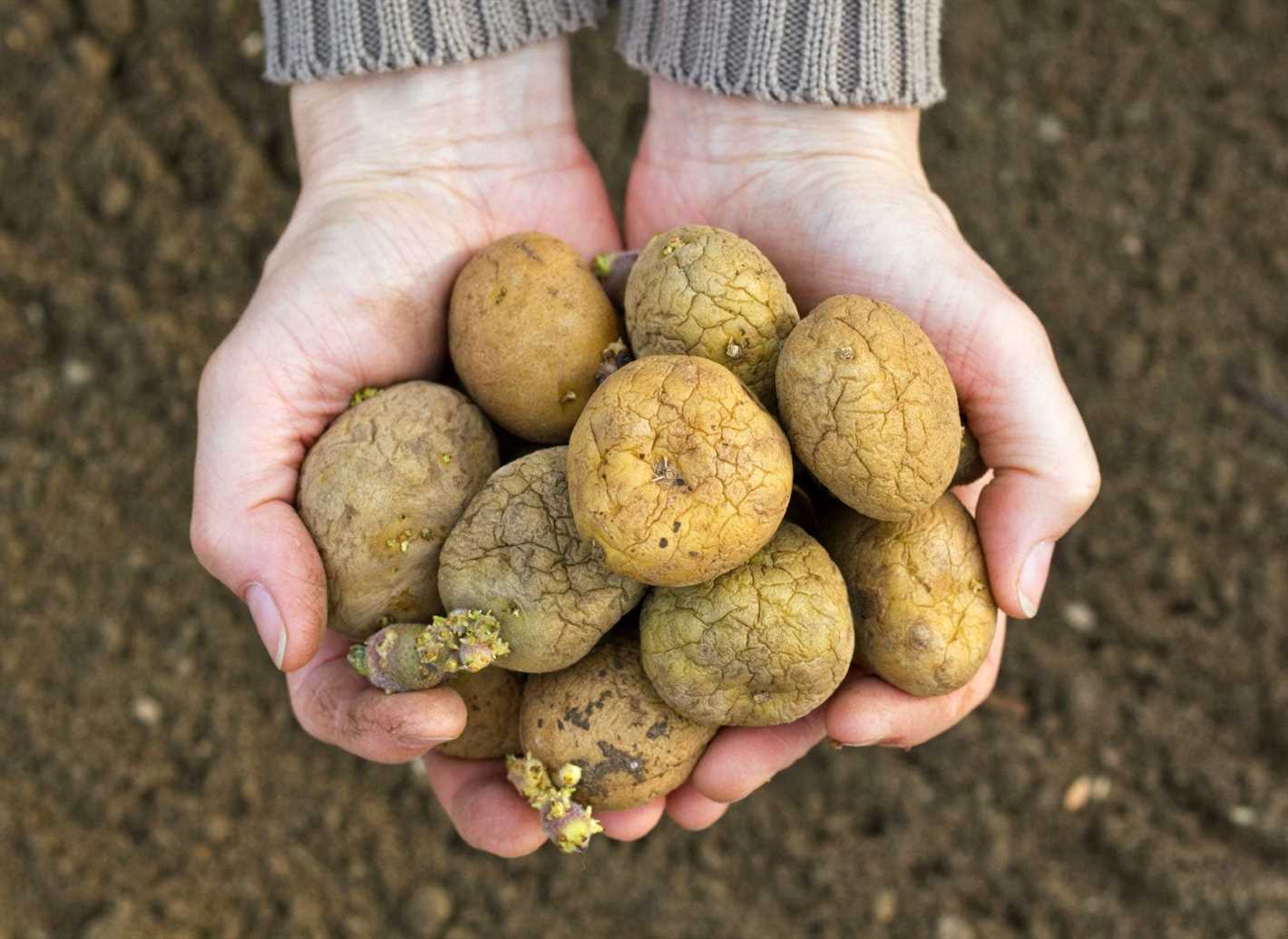
Once the potatoes have dried, inspect them carefully for any signs of damage, disease or pests. Remove any damaged or diseased potatoes to prevent them from spoiling the rest of the crop. Gently brush off any excess soil without washing them.
6. Storage
Store the potatoes in a cool, dark, and well-ventilated place. Ideal temperature for storing potatoes is around 45-50°F (7-10°C). Avoid storing them near onions or fruits, as they can release gases that promote spoilage.
7. Longer-Term Storage
If you want to store your potatoes for a longer period, consider storing them in a root cellar or a basement where the temperature and humidity can be controlled. Make sure to regularly check for any signs of rot or decay and remove any affected potatoes.
By following these guidelines, you can ensure that your super elite potatoes stay fresh and tasty for an extended period of time.
“Question-Answer”
Can I grow potatoes from seeds instead of using potato tubers?
Yes, you can grow potatoes from seeds. It’s a more time-consuming process, but it allows for greater genetic diversity and the potential to develop new potato varieties.
What is the proper way to prepare potato seeds for planting?
To prepare potato seeds for planting, start by cleaning the seeds to remove any debris. Then, soak them in water for 24 hours to encourage germination. After soaking, place the seeds in a cool, dry place for a few days to allow them to dry out.
When is the best time to sow potato seeds?
The best time to sow potato seeds is in early spring, when the soil temperature has reached at least 50°F (10°C). This is usually around the time when the last frost has passed. Sowing too early can result in poor germination, while sowing too late can reduce the crop yield.
Can I sow potato seeds directly into the ground?
Yes, you can sow potato seeds directly into the ground. However, it’s important to prepare the soil properly by loosening it and removing any weeds. You should also amend the soil with organic matter, such as compost, to improve its fertility.
How deep should I plant potato seeds?
Potato seeds should be planted about 1 inch (2.5 cm) deep in the soil. This depth allows the seeds to establish roots and emerge from the soil properly. Planting too shallow can result in poor root development, while planting too deep can delay emergence and weaken the seedlings.
How long does it take for potato seeds to germinate?
Potato seeds typically germinate within 2 to 3 weeks after planting. However, the exact germination time can vary depending on factors such as soil temperature and moisture levels. It’s important to keep the soil consistently moist during the germination period to promote successful sprouting.







